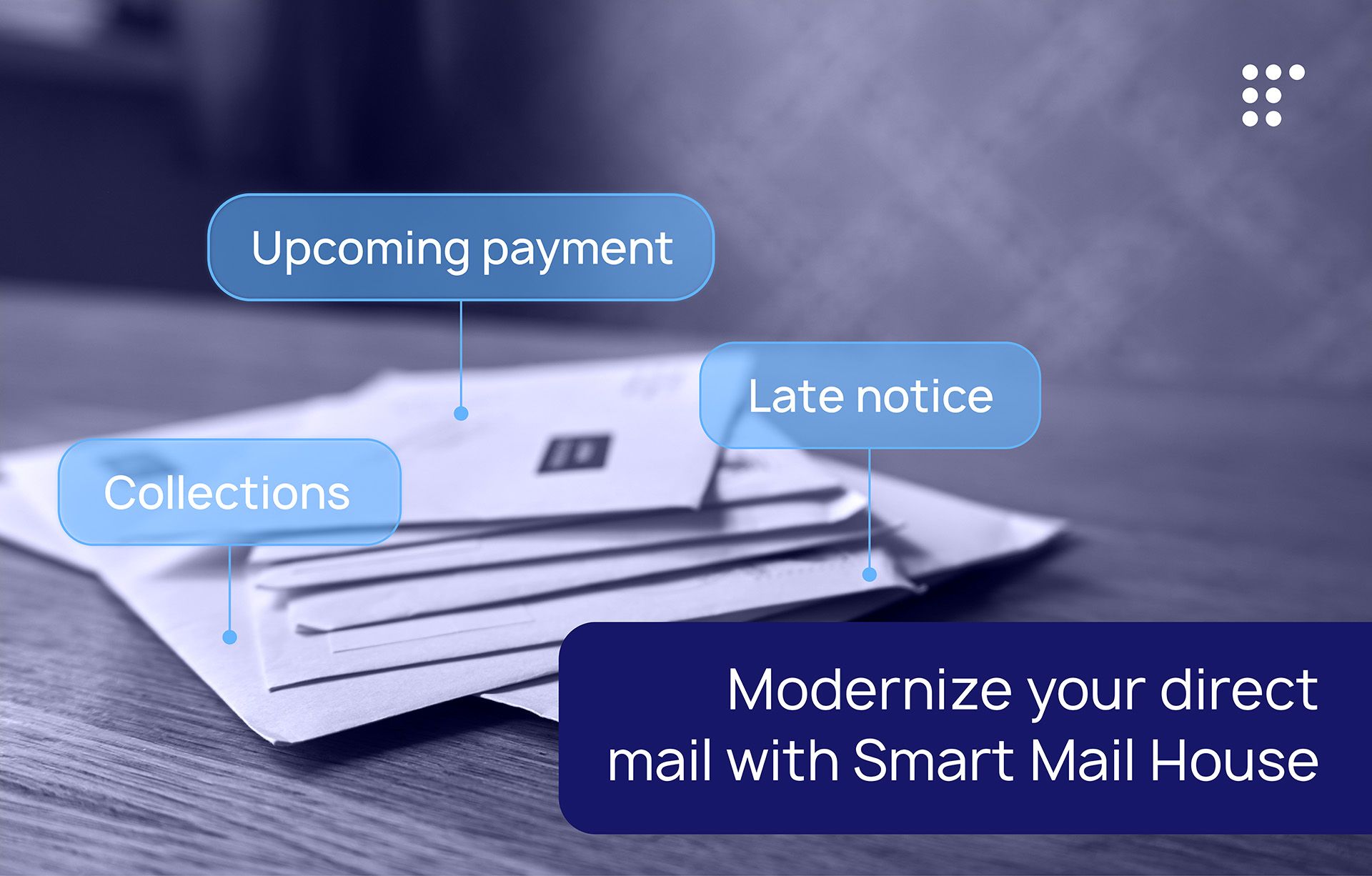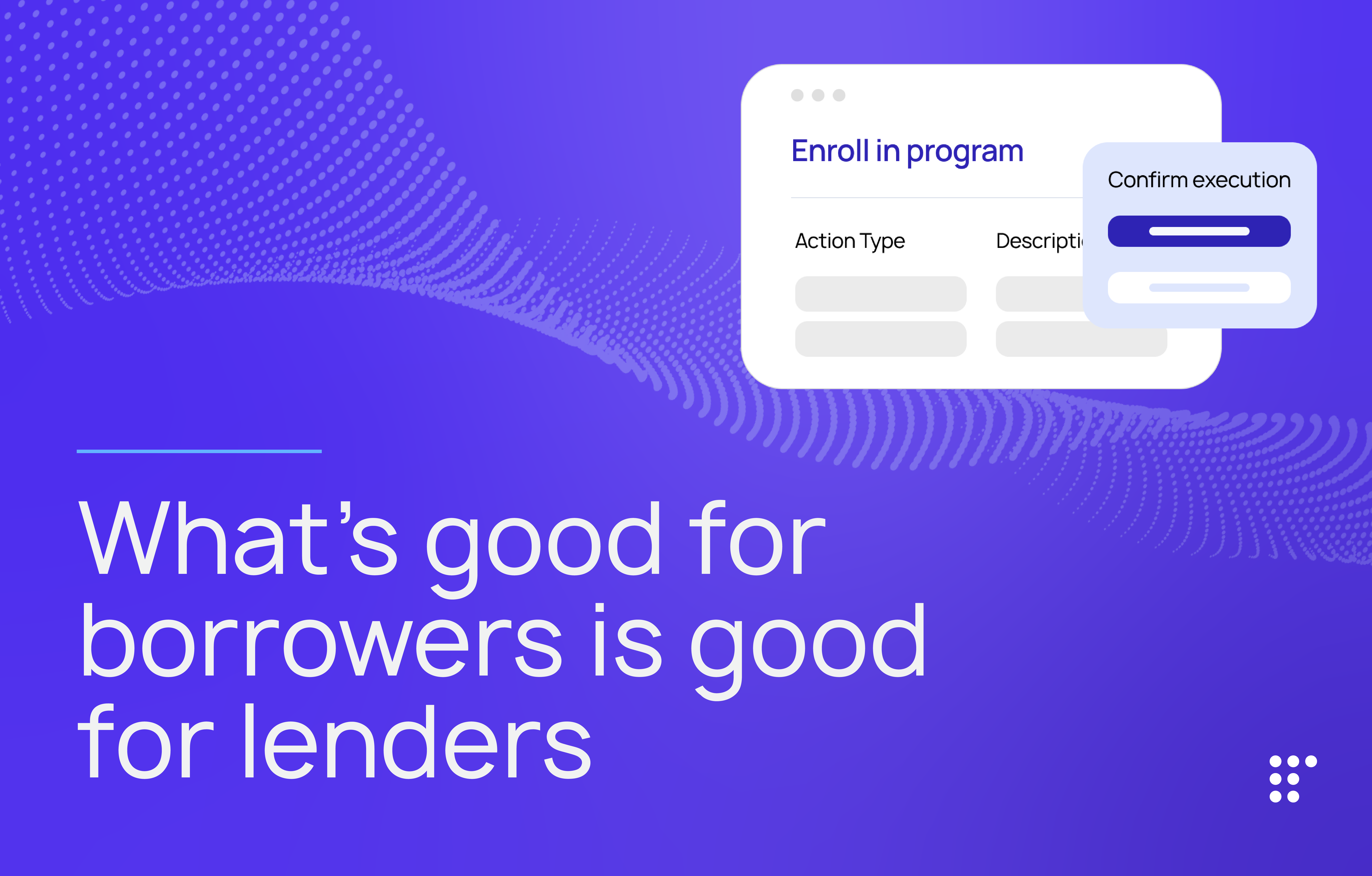Everything You Need to Know About B2B Lending Software
Big banks typically lend $500,000+ to businesses seeking commercial loans. But these large loans are risky and complex, so they often entail lengthy credit risk evaluation processes and lots of paperwork.
Furthermore, loan approval and the delivery of funds can take a long time, which can be problematic for small and medium-sized businesses (SMEs) that need funding to ensure cash flow. The bottom line is this: if companies can’t get the funds they need quickly, they’ll struggle to deliver their products and services.
This inefficiency can stifle growth or lead to business failure, which is why many business borrowers today seek out more flexible loans from alternative commercial lenders.
Large companies are stepping in to fulfill this new demand by providing business lending services. This type of lending process allows smaller businesses to expand with the help of larger, more established businesses. SMEs use B2B loans to finance real estate, fund payroll, purchase inventory, or expand to new services.
The reason this new type of business lending has emerged comes down to technology. With today’s advanced loan software platforms, B2B lending is not only a workable alternative for SMEs in need of flexible funding. It’s highly efficient, allowing all parties to benefit.
Let’s look at what B2B lending technology provides and the advantages of using a good platform.
How B2B Loans Streamline the Lending Process
Offering loans is a complex process. As such, large businesses might encounter efficiency problems and human error when providing B2B loans.
The traditional lending process takes weeks, or longer. And with so many manual steps, lenders might make a mistake that costs them liquidity in the future, and borrowers could face difficulties securing loans at critical time windows.
That’s why many businesses have been using B2B lending software to help them streamline things.
A B2B lending platform helps business lending providers mitigate human error, increase efficiency, and automate loan servicing processes. Such a lending platform translates into simplified workflows, better client service, and increased revenue from process optimization.

What does B2B Lending Software Do?
Historically, issuing B2B loans requires lenders to go through manual steps so they can assess whether borrowers are creditworthy. Processes such as reviewing borrowing capacity, calculating credit scoring, processing personal data, and loan calculations take time, resulting in long loan approval times.
B2B lending software, similar to consumer lending platforms, automates these processes through powerful technology, such as machine learning, document management, artificial intelligence, and more.
B2B platform features cover a wide range of lender services, allowing businesses to increase efficiency, process more loans, and provide borrowers with quick decisions. A complete loan platform will include:
- – Loan applications
- – Credit decisioning
- – Risk evaluation
- – Origination
- – Servicing
- – Underwriting
- – Reporting
- – Collections

Loan providers using B2B lending platforms benefit from:
- – Quick application processing, loan origination, and instant approvals
- – Streamlined decision making
- – Tools to elevate customer satisfaction
- – Faster underwriting
- – Enhanced workflows and minimized human error
Top 5 Advantages of Using B2B Lending Software
B2B lending platforms help lenders automate the process of extending credit and loaning money to small business owners. These platforms have lending automation features for everyday tasks, from providing personalized offers and loan origination to using data to make better decisions.
Advantage #1: Increase Customer Loyalty
A B2B lending workflow with inefficiencies will decrease customer satisfaction and make it challenging to acquire new borrowers. With a powerful B2B lending platform, however, you can streamline processes and decrease loan turnaround time, achieving a more positive experience for borrowers.
Through configurable loan applications, customers can provide their details online quickly and easily. Then, the software verifies bank accounts, empowering your staff to have the right data at their fingertips to complete the loan origination process as quickly as possible.
Loan managers can swiftly access a customer’s bank statements, view their credit score, and make informed decisions that reduce human error.
All these improved processes help you build loyalty and increase your customer base, allowing you to help more businesses increase cash flow and get the necessary credit they need to grow.
Advantage #2: Ensure Secure Payment Processing
As a B2B lender, you need to securely process payments, track transactions, and store payment data. In a traditional bank setting, these processes happen across different software technologies, which may not be integrated.
This makes it challenging to have a complete customer profile. Errors might occur, and important data is missed, resulting in poor service and payment mistakes.
An automated B2B lending platform integrates across different technologies and third-party payment processors to ensure secure payment processing.
The lending platform keeps track of transactions, securely stores payment data for individual and batch transactions, and provides a complete customer payment profile with the highest security standards.
Advantage #3: Enhance Client Relationships
Communication with clients is key to building relationships. Small and medium-sized business customers expect the company they are borrowing money from to send communications about servicing their loan, including loan origination status, the payment schedule, and more.
Manually sending this information through different channels, such as email, text, and mail takes too much time and can result in human error. By automating processes, businesses that use B2B lending platforms can simplify communication.
You can set up triggers so that clients receive essential information about their loan automatically. And with a flexible platform, you can communicate through each customer’s preferred channel, whether that’s text, email, automated phone calls, or paper mail.

Lenders can automate communication to include urgent messages so borrowers understand that the message contains important and confidential data. Through the B2B lending platform, a lender can also gather communications data and analyze it to determine the most efficient way to send important financing messages.
By ensuring efficient and error-free communication, B2B lenders make things easier for borrowers, which improves client satisfaction and strengthens relationships.
Advantage #4: Improve Cash Flow
The advanced technology of a B2B lending platform can even help a business improve its cash flow. The streamlined process of extending credit to borrowers with shorter and more flexible repayment methods increases efficiency and enables the lender to gain additional liquidity.
With the traditional methods of extending B2B credit, businesses were processing loans inefficiently, and they didn’t have the right data to make intelligent repayment decisions.
As such, financing and repayments may not have been optimized. The increased data and efficiency you get from loan software can help tackle this issue and lead to better cash flow and liquidity.
Advantage #5: Customization to Accommodate Business Needs
Every B2B loan is unique, so providing financing and extending credit with the same processes and templates can be challenging.
Without an automation lending platform, loan staff have to manually make changes and accommodate every borrower depending on their requirements and market movements. These processes are more open to mistakes and inefficiency.
A proper B2B lending platform helps by offering configurable forms and wizards. These forms make it possible to provide financing with payment terms that meet the needs of each client.
Whether a business borrower prefers weekly repayments and a short one-year loan or needs more time to pay off their financing, with data-driven software, you can offer flexible terms without taking on more risk.
And at the end of the day, flexibility for repayment terms is one big reason why SMEs choose B2B lending instead of the traditional lending process offered by most national and community banks.
By using a flexible B2B lending platform, you can efficiently customize the total amount of the principal, add discounts, choose the proper interest rate, select an underwriting or refinance fee, customize the contract date and first payment date, and set the term and payment frequency.
What Makes a Good B2B Lending Software Solution?
With all these advantages, a B2B lending platform is a logical investment for any business that issues loans to another business. But there is already a quickly developing market for this technology, so choosing the right platform is key.
When you’re evaluating a B2B loan platform, look for the following factors to determine its quality:
- Platform-first, not a point solution. A B2B loan platform integrates a variety of features and systems into one, allowing a complete view of client profiles and enhanced data governance.
- Scalability and flexibility. A scalable and flexible platform allows you to set flexible financing options for small and medium-sized businesses and scale up your business to improve processes and profit.
- Fits your business needs. Opt for a B2B loan platform that allows you to customize it to fit your business needs rather than an out-of-the-box solution.
- Future-proof cloud functionality. With every business moving toward digital transformation, choosing a B2B loan platform based in the cloud will improve cost efficiency, maintenance, and security.
Conclusion
SMEs are increasingly turning to B2B financing for faster and more flexible repayment methods, but businesses providing these loans need to become efficient to truly serve as a worthwhile alternative.
Similar to businesses providing personal loans, B2B lenders need the right lending technology to streamline processes, improve productivity, and to support their existing digital transformation journey.
Advanced B2B lending platforms can help businesses improve cash flow, decrease loan turnaround time, and improve customer satisfaction. They allow your business to reach new customers and set processes to make loan origination and servicing faster, all while ensuring data security and governance.
If you’re looking for a complete platform specializing in B2B lending, LoanPro’s B2B lending software provides secure payments and features that allow for rich customization. Schedule a demo today to see the product in action.





